The story of GANT begins with a Ukrainian boy in search of a better life who sailed to America, fell in love, found success and forever changed American style. Berl Gantmacher was a miller’s son from Miropol in Ukraine who, by the time he was a teenager, had already made his way from the Russian Empire to Rotterdam. From there he continued west, embarking on the S.S. Potsdam, a Holland America Line steamship, and sailing to New York City. Archives at Ellis Island record him arriving on November 12, 1907.
He was 17 years old.
Like so many immigrants before him, he Americanized his name, changing Berl to Bernard. He enrolled in night classes at Columbia University’s College of Pharmacy but during the day he found work in the city’s bustling Garment District. It was hard work – he was as a “closer,” someone who assembles garments – but it developed his entrepreneurial zeal and taught him tailoring. It also introduced him to Rebecca Rose, a woman with a job sewing buttonholes and buttons. She would later become his wife.
At the outbreak of the First World War, Bernard joined the US Army and went to fight in France. Upon completing his military service he returned to New York with a renewed desire to succeed. He graduated from college, married Rebecca, and decided the time was right to go into business for himself. With his partner Morris Shapiro he founded the Par-Ex Shirt Company based in Brooklyn.
Par-Ex made shirts par excellence for other brands, including Brooks Brothers. The new company was a success, and in 1927 the Par-Ex Shirt Company relocated to upscale New Haven, Connecticut.
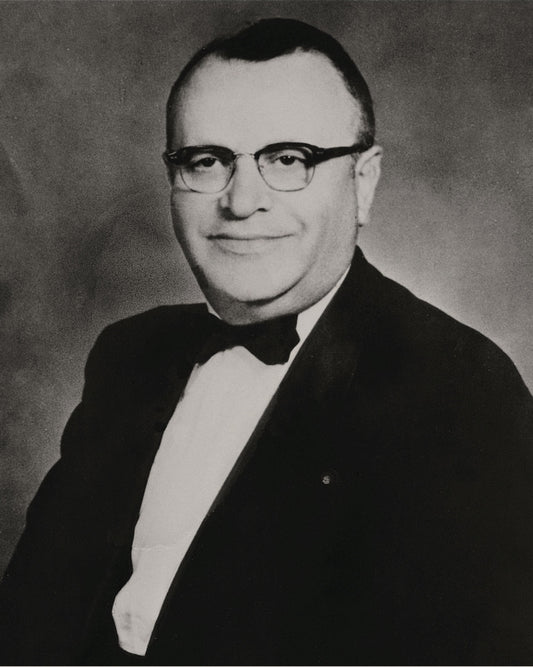
1907 – 1927
The start of a long journey

1927 – 1949
The GANT brand is born
Encouraged by his sons, Bernard Gantmacher establishes GANT Inc – and starts to make shirts under the company’s own label. At the time the town of New Haven was one of America’s capitals of clothing manufacture. One reason for this was that it had a large community of Italian immigrants, many of whom were talented garment workers.
Times were good for the Gantmachers. The business grew – and so did the family. Two of Bernard and Rebecca’s children, Marty and Elliot, would go on to spur GANT to great success. The boys, born in 1921 and 1926, grew up in New Haven and helped at the shirt factory by sweeping floors and fusing collars. They were also aware of what was happening on the campus of nearby Yale University, which would change the course of American fashion.
The outbreak of World War II interrupted their careers and both sons enlisted in the army. Upon returning home in the 1940s they studied at the University of Connecticut. Marty specialized in business administration while Elliot majored in marketing. Then, armed with their new skills, they went back into the family business.
The brothers saw that America was entering a period of rapid and profound change. The war had blown away many old traditions. New kinds of art, music and fashion were spreading across the nation. Marty and Elliot saw an opportunity – and seized it. They convinced their father the time was right to leave Par-Ex and the contracting business behind. Instead of making clothing for other labels, they would sell perfectly tailored shirts under their own label.
In April 1949, GANT Inc. was born.
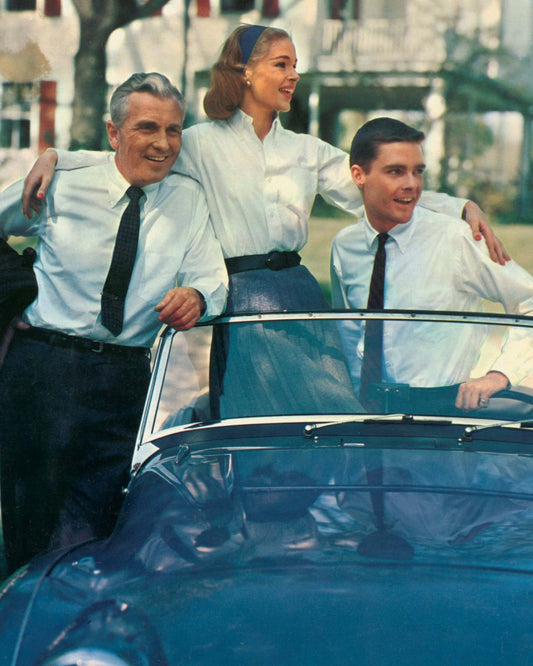
1949 – 1959
Reaching the right crowd
Marty and Elliot insist that when it comes to GANT products, only the best is acceptable. Marty and Elliot understood the family business. They identified with it so much they even changed their own name – Gantmacher became Gant. They also understood the power of advertising. They wanted their products to always be seen in the right places. That meant supplying only the best stores in town, and advertising in The New Yorker.
The first issue of The New Yorker had been published in February 1925 with a drawing of a monocle-wearing dandy on the cover. It was a new kind of magazine that appealed to a new kind of readership.
“The New Yorker will be the magazine which is not edited for the old lady in Dubuque,” wrote founding editor Harold Ross. “It will not be concerned in what she is thinking about. This is not meant in disrespect, but The New Yorker is a magazine avowedly published for a metropolitan audience.”
It attracted the best and wittiest writers, everyone from J. D. Salinger and Vladimir Nabokov to Dorothy Parker and F. Scott Fitzgerald and his wife Zelda. It was not only choosy about which writers it would publish, but also which adverts it would run. It declined commercials that didn’t fit the magazine’s tone.
One of the companies that did fit the bill was GANT. At first all Marty and Elliot could afford were 1/8 page black-and-white ads every three months. Gradually they moved up to bigger and more frequent ads, featuring the oxford shirt in four different photos and four different situations, then ultimately running eight full-color ads in one year. The campaign spread the message that GANT produced the sort of shirts that the bright young sophisticates of the day were wearing.

1950s
The colour explosion
Elliot Gant once said, “Let’s not try to be everything to everybody. We’re individuals. When you think for yourself you can be tastefully different.”
As the new decade unfolded, the Ivy League Look became even more distinctive and debonair. GANT developed more and more boldly-coloured shirts in unusual fabrics including Madras, candy-stripe and tartan. These shirts were in tune with the revolutionary mood of the Fifties. This became known as the Oxford Colour Explosion, and it has been a key feature of the Ivy League Look ever since. Eventually, Marty and Elliot even forbade their sales staff from wearing white shirts while working.
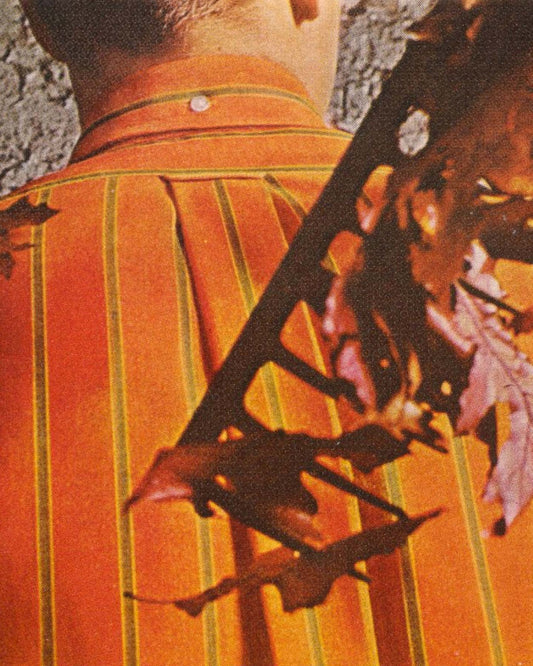
Mid-1950s
The mark of quality
From the outset, GANT was known for the quality of its shirts. In the early days, when the company was in the business of supplying shirts to other retailers, a discreet GANT trademark was added: a little diamond with a “G” in it stamped on the tail of the shirt. This mark was the customer’s assurance of quality just as much as the retailer’s label inside the collar. By the mid-1950s, the Diamond G had become part of the American menswear history – a distinctive sign of superior quality that helped make the signature shirts coveted best sellers, with demand far outstripping supply.
The 1950s was a time of unprecedented growth in America and GANT shirts helped define the casual-yet-smart look that dominated in the post-war years. GANT’s detailed craftsmanship and effortless American style appealed to a generation of men who had spent years wearing military issue clothing and who had now returned home to take their place in the booming middle class.
They appreciated the perfect roll of a GANT collar, and the quality of fabric one could expect with a GANT shirt. And soon they would appreciate another quality that GANT pioneered: color. For decades the plain white shirt had dominated in menswear but that was all about to change forever. An explosion of color was coming – and that explosion sparked in the town of New Haven, Connecticut.

1954 – 1959
New Haven and the Ivy League look
The term Ivy League was first used in the 1930s to refer to a group of northeastern American colleges that were sporting rivals. However it soon became synonymous with more than just sports. It denoted academic excellence, prestige, tradition – and a new and relaxed style that would forever change American fashion. A style that became known as the Ivy League Look.
In 1954, LIFE magazine declared New Haven the home of the Ivy League Look. The reason for this was that New Haven had not only a thriving garment industry but was also the home of Yale University. It was the ideal place for the Ivy League Look to flourish.
The new look was a way of dressing well without necessarily dressing up. It featured items such as white buckskin shoes, grey flannel slacks, button-down shirts and jackets with a natural shoulder. It was a more casual look, a sharp contrast to the double-breasted, padded-shoulder suits that dominated in the pre-war years.
Marty and Elliot were instinctively aware of what was happening in their hometown. They saw the emerging style and recognised that it dovetailed with what GANT was doing. They started experimenting with shirts in different fabrics and styles, and added bolder colours to the pale 1950s palette. The family took pride in their role in shaping the bright new look, and in 1954 the company’s name was changed to GANT of New Haven.
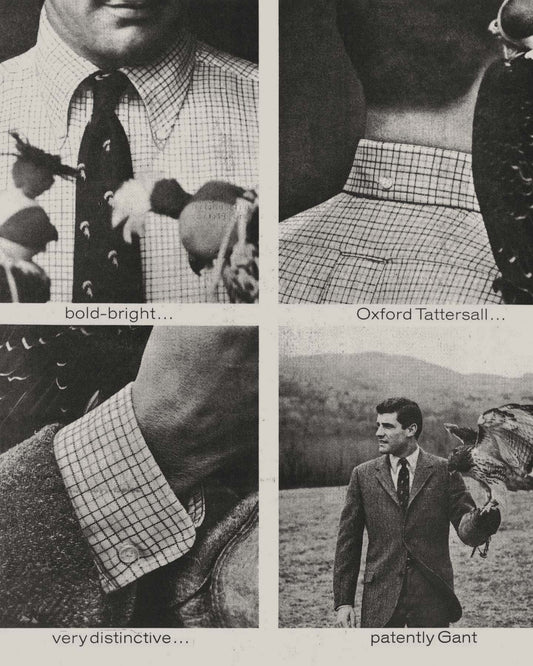
1949 – 1960
GANT signatures
The button-down shirt was first worn by English polo players but by the late 1940s, it was an essential item in the wardrobe of any well-dressed man. In America it was originally a Brooks Brothers creation dating from the 1920s but GANT played a major role in its evolution, making it their own.
There are many reasons why this happened. Quality was one, but there were also several aspects to the shirt’s construction that were not only unique but in certain cases also extremely difficult to copy. Among these was the shape formed by the front edges of the buttoned collar. It took the combination of Bernard’s technical skill and Marty and Elliot’s fashion sense to perfect it and it became known as the perfect roll.
The perfect roll wasn’t the only signature detail that GANT perfected. Other small touches that customers appreciated included: The locker loop on the back of the shirt that can be used to hang the shirt to keep it wrinkle-free in the locker room. It even became a part of Ivy League dating culture that a guy would remove his loop when he was going steady with a girl (and she, in return, would wear his scarf).
The box pleat, at the back of the shirt, that gave the wearer greater freedom of movement. And the back collar button that kept the tie in place and prevented the collar from riding up. In 1963, the button tab won an award from Esquire magazine. Elliot invented the button tab to make the tie and the shirt match perfectly. Together with the perfect roll, the tie knot blends into the shirt and creates that ideal Ivy League Look. At the same time that they were perfecting the men’s shirt, GANT noticed that it wasn’t just men who coveted their clothing. Inspired by the number of women who were borrowing their boyfriends’ and husbands’ shirts, they realised that both sexes appreciated quality clothing. GANT launched their women’s shirts with the slogan: “For women GANT makes shirts, not blouses.”
A new chapter was beginning for the company, and with it came a new name. Now the company was known simply as GANT Shirtmakers, reflecting the excellence and cultural importance of the company’s signature item.
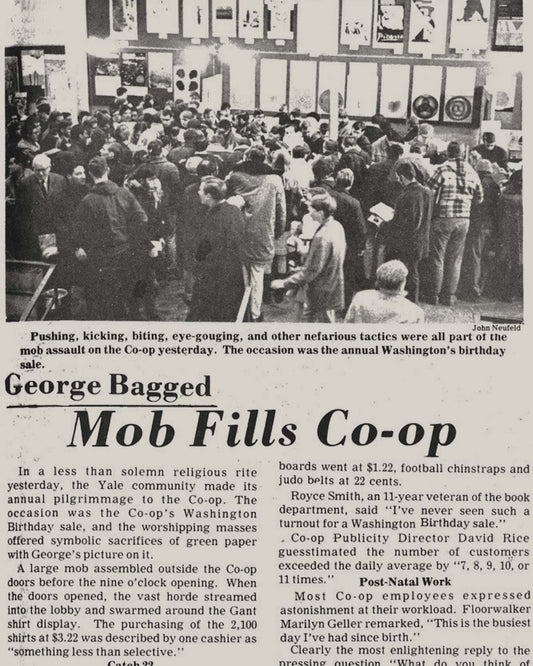
1960s
Yale Co-op store
For the students, the Yale Co-op was more than just the place to stock up on everything from toothbrushes to textbooks. The on-campus store was also where they went to buy clothing and as the Ivy League Look exploded, the Yale Co-op was the nexus of the new style. The store was founded in 1885 and was the second-oldest university store in the States (just beaten by the Harvard COOP). It supplied generations of students with the clothes that would become Ivy League essentials: natural-shoulder suits, regimental ties, V-necked sweaters, sport jackets, khakis, wing-tipped shoes and loafers – all the things needed to look cool on campus.
However, GANT’s line of shirts for the Yale Co-op was a sensation. The button-downs flew off the shelves and became an integral part of Ivy League Look. Soon the button-down shirt was found not just on campus but also across the country, seen as the essential garment for the stylish American man of the 1950s and 1960s. And for anyone who wanted the best, the GANT button-down was just the ticket.

1949 and onward
Entering American sportswear
As the Second World War ended and American soldiers returned home, the country went through a period of rapid change. New tastes and influences in sport and fashion spread across the nation. Radio, TV and magazines introduced people to an active lifestyle they had never dreamed existed. As sports activities influenced many creative tailoring features, the demand for a comfortable look continued to spread. GANT shirts helped define the casual-yet-smart look. There was a booming middle class that appreciated the perfect roll of a GANT collar and the quality of fabric one could expect with a GANT shirt. Until the late 1960s GANT had been solely a shirtmaker but now the time had come to use their specialist knowledge to broaden their range. In 1971, they produced their first collection of American Sportswear including ties, trousers and rugby shirts.

